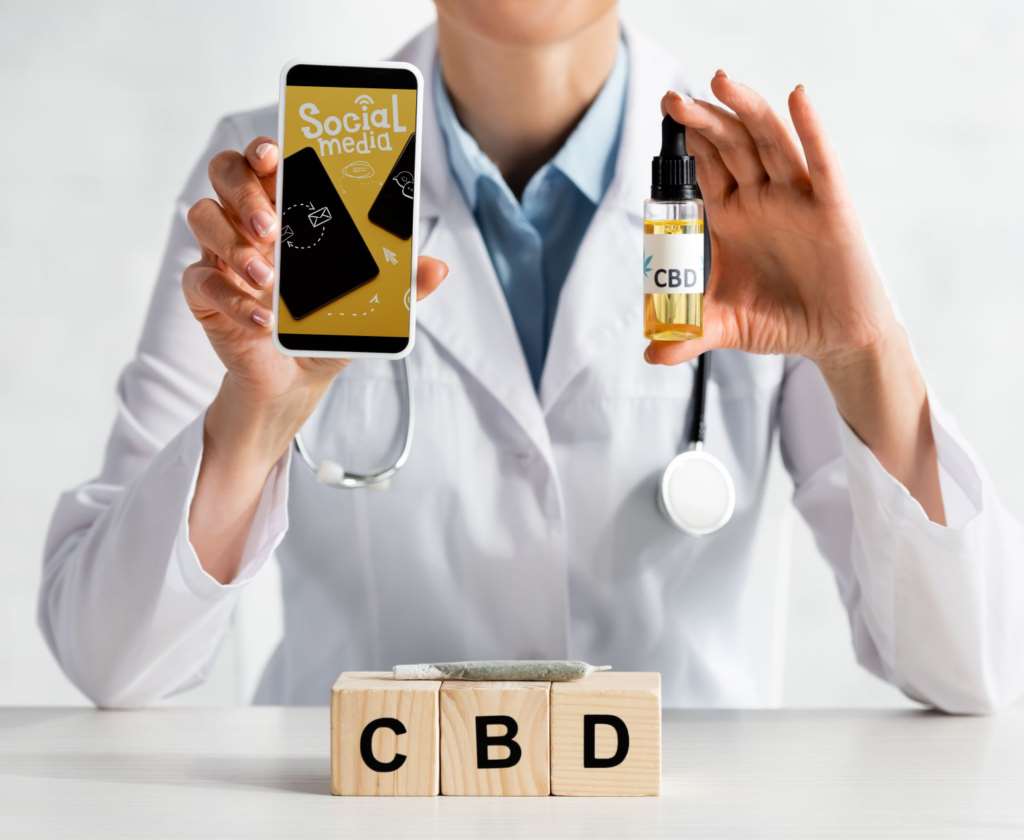Jump-Start Your Online Business
Social media undoubtedly helps your online business grow. It’s because almost every other person in the world uses one of the major social media platforms – like Facebook, Instagram, YouTube, Twitter, etc. – and people are going online for many reasons. For some, shopping using the internet is more comfortable and convenient. Others think finding information is easier using search engines. Also, it’s faster and easier to complete specific tasks online, and to reach out to people without physically going anywhere – which is especially relevant as governments advise us to stay home to keep the deadly virus from spreading. With or without the coronavirus, the internet is a crucial part of your customers’ lives. That’s why we are happy if you have an online business; it means you will reach customers who prefer shopping virtually. But to get the maximum benefit out of the internet, you should also have social media accounts to spread the word about your business online.
Why Social Media
Social media is an essential part of a marketing strategy for any kind of business, no matter if it’s online or offline. According to statistics in 2020, 3,8 billion people use social media. That’s nearly half of the world’s population! It means most of your potential customers are on social media and that you have more chances of reaching them if you are there too. It’s great if you have a website, and you should have one, but social media serves a different purpose.
Collect Information About Your Potential Clients’ Needs
One of the most evident differences between your website and social media is that on your site, you don’t get any reactions. People either make or don’t make a purchase. You might have customer reviews on your website, and get feedback about your products, but this happens after people buy your product(s). Sometimes people simply don’t make a purchase – not because they don’t like the product, but because they can’t find the right size, think the product is overpriced, might want the product in another color, etc. It’s also unlikely they will call your office with a request to produce the T-shirt in red, or a product in plus size, for example. But commenting on a picture on Facebook is simple and doesn’t involve an uncomfortable situation. If people comment that they want a T-shirt in red, or a pair of pants in plus-size, you get to collect information about these potential customers and better know what their needs are.
Establish Relationships With Potential Customers
Social media is also a great medium to connect with your existing or potential customers. You can reply to comments, share information, post about exciting things happening around your area, and establish a relationship with them. You can also ask questions to get to know your clients better (so you can modify your products based on their needs and preferences) or their opinions about the product. For example, “Hey, guys! Here is our new design for reading glasses. Do you find it as attractive as Jeremy does?”
Then someone can comment:
“I love them! But are you planning to make a red pair? I would buy it if you had it in red.”
You can reply:
“Thank you for your comment! We weren’t planning to make it in red, but now we think it’s a great idea. We will discuss it with our designer! Meanwhile, we can offer another pair in red. What do you think?“
This kind of conversation simply won’t happen if you don’t have a social media account.
Establish Yourself as a Brand
In addition to establishing relationships, social media helps show your style and demonstrate what makes you different from others; you can establish yourself as a brand and share stories about your products. According to Simon Sinek, an American author and motivational speaker, people want to know why you are doing what you are doing. And it’s better to start with ‘why’ rather than with ‘what.’
“Very few people and organizations know why they do what they do. Your ‘why’ is your purpose. What’s your cause? What’s your belief? Why does your organization exist?”
– Simon Sinek in his TED Talk.
Social Media Platforms to Help Your Online Business
To start using social media, you should first create social media accounts. But there are different social media platforms (with very different audiences), and you will want to know which one is best for your brand.
In terms of popularity, Facebook is the number 1 social media platform with 2,45 billion monthly users. Statistics indicate over 80 million small businesses around the world use Facebook. If you want to reach your audience, you should have a Facebook account.
But having only one account is not enough: you will miss out on large segments of users if you limit yourself to one platform. What are some other platforms you can use? It all depends on the business you are running and who your customers are. Try to define who your audience is to find out which social platforms they use most. To collect the information, you can include small questionnaires on your website, either at checkout or during registration. Ask questions about the customer’s age, location, interests, social media preferences, etc. This information will help you determine which social media platforms might be best to use and what content you will share on your page. Do you have teen customers you want to target? If so, they are more likely to use Instagram over Facebook. In fact, 72% of teenagers in the US use Instagram compared to 51% who use Facebook.
Instagram is the fifth most popular app in the Apple Store, and 1 billion people use it every month. There is no doubt Instagram is a great place to market your brand, especially if your customers prefer visual information. Additionally, 11% of US social media users shop on Instagram, and 81% of people use Instagram to research products and services. Moreover, Instagram allows users to have shoppable posts, which means customers can shop for your products directly on Instagram. But to use this feature, an account must be from the US, Canada, Brazil, France, Italy, Spain, Australia, or the UK. To have shoppable posts, you should create a Facebook Business account. Then, connect this page to your Instagram account. The next step is to add products to the Facebook catalog. To create a catalog, click here.
“After you create a catalogue, you can create ads and shopping experiences that pull information from your catalogue to show people your items. For example, you can use your catalogue to run dynamic ads, set up shopping on Instagram, create a shop on your business Page, and more.”
– via Facebook.
For the final step, open Instagram, click Get Started > Business Settings > Shopping. And select the Facebook catalog, then click Done. To read more about shoppable posts, click here.
YouTube is another great place for online businesses, and it’s the second most-used search engine in the world after Google. It enables you to appear in Google search results, and your video might even appear as the first result for a search query. Having a YouTube account doesn’t mean you need a professional film camera or even a team of professional filmmakers. You can create simple videos all of your own that require little editing. Videos you post can be handheld and shot on your mobile phone.
Most of the queries containing “how-to” have featured snippets. This means users don’t have to click on any websites in the results to see the answer. Instead, the answer automatically appears above the list of webpages. And in many cases, users get a video from YouTube. These are called Featured clips and they start and end automatically at the section of the video that answers the query.
Should you use Twitter too? Although there is no exact formula for creating a list of social media platforms to use, if you know your clients and potential customers are there, then yes! Even if they are not there, Twitter is still a great place to reach industry experts and influencers by engaging with their content. You can also ask questions, or express your opinions, by commenting on their tweets. Three-quarters of companies online use Twitter for marketing.
Social Media for SEO
Search Engine Optimization (SEO) is an excellent tool to bring more traffic to your website. And the more traffic you have, the more potential clients are looking at your products online. The effects of social media on a website ranking is debatable. Studies show a correlation between social media shares and higher rankings in search engines such as Google.
Social Media signals may not be a direct ranking factor, but likely still help your website improve its visibility in search engines. One way it can affect your ranking is: if you have a social media account where you share your content, more people are likely to see it and share it. And the more people who see it, the more likely it is for other websites to link to your content. When other sites link to yours, it means you have a backlink. And backlinks are a ranking factor for Google.
“Social sharing directly increases the visibility of a page. That increased visibility means it may get noticed by a creator of content, such as a blogger, journalist, or author. That creator may mention it in a subsequent piece of content. If they linked to it, that page is then more likely to rank.”
– via Orbit Media Studios
Mistakes to Avoid When Using Social Media
Creating social media accounts is a great way to jump-start your online business – but you should definitely have a strategy when doing so. You cannot just upload a catalog of products, write 12 posts in 2 days, and then disappear (leaving your followers with no further information). Having Facebook, YouTube, Instagram, or any other account, means you regularly need to post – and not only when you are ‘in the mood for posting.’ You must have a plan. It can be 1 post per day, or 3 posts per week – whatever you can maintain and think works for your brand.
Also, keep in mind that there will be users who can give your products or services negative feedback. If you don’t reply to these negative comments, others may assume: a) you have nothing to say b) you don’t care about your clients c) you don’t want to invest your time in answering your clients or d) all of the above. So, it’s best if you reply to all comments and reviews – even the negative ones. Remember to be polite and try to fix the problems, even if you believe you did nothing wrong.
Something else to keep in mind is: don’t just copy and paste the same post on different platforms. Each platform has its characteristics because of the audience or because of technical differences. You should have a separate strategy for each platform you use and customize accordingly. To read more about what to post on each social media platform, click here.
We hope after reading this article, you are excited to create social media accounts to reach more clients, market your brand, and grow your online business.





